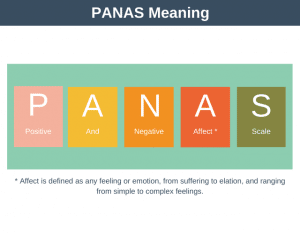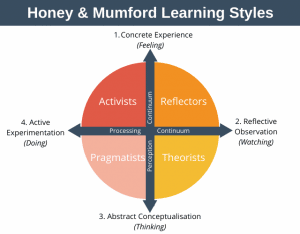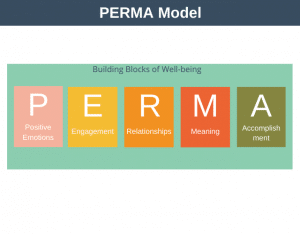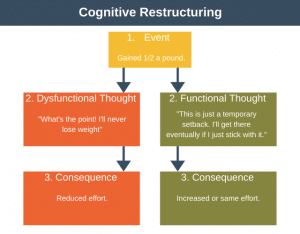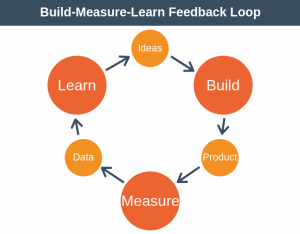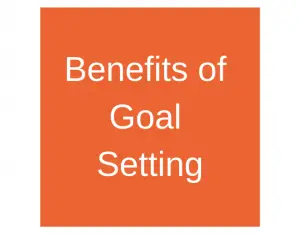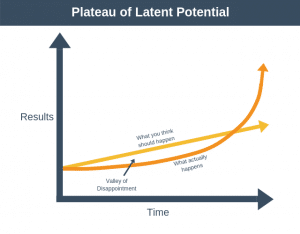The Stages of Change Model, also known as the Transtheoretical Model, is a six-stage model that can help you change your behaviors for the better.
If you ever made a new year’s resolution, you’ll know how hard they can be to stick with. In fact, according to one survey, only 9% of people who make resolutions successfully keep them.
Behavioral scientists have found that people who use the Stages of Change Model to make a behavior change are more successful than those that don’t.
The Stages of Change Model (Transtheoretical Model) was originally published in the early 1980s by James Prochaska and Carlo DiClemente. It was based on their research as to why certain people could quit smoking on their own.
The Stages of Change Model
The Stages of Change Model is an intentional change model, meaning it can help change your behavior only when you want to change.
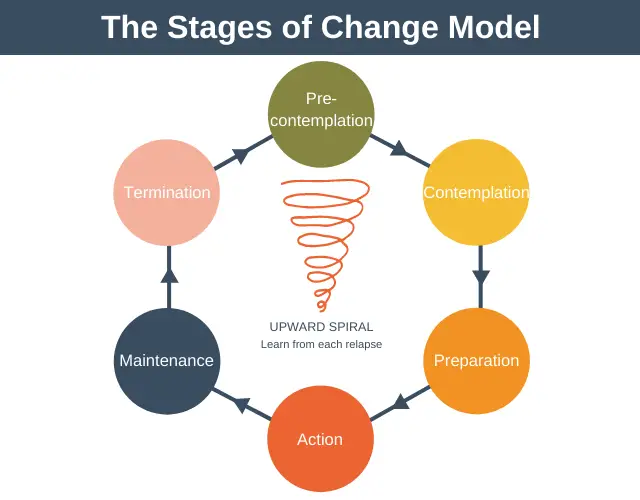
It is a cyclical model, meaning you may need to loop through the model many times for a behavior change to stick permanently.
When you use the model, you may find that:
- you’re stuck on a certain step of the model for months at a time before you’re ready to move to the next step.
- you stumble, relapse, or have to start the process all over again.
This is perfectly normal. Lasting change does not happen overnight. Often progress comes in fits and starts, and you make progress jerkily, taking two steps forward and one step backward before being ready to take two steps forward again.
The six stages of the model are:
- Precontemplation: where you don’t see the need to change now.
- Contemplation: where you think you might change in the future.
- Preparation: where you have decided to change.
- Action: where you have started to change.
- Maintenance: where you believe you have changed.
- Termination: where you know you have changed forever.
You enter the model at the Precontemplation stage, but you can exit and re-enter the model at any stage once you have entered the model.
Let’s take a closer look at each of the steps of the model.
1. Precontemplation
The first stage of the Stages of Change Model, precontemplation, is characterized by having no intention to take action in the foreseeable future.
You may not believe or understand that your current behavior is damaging in this stage. You may underestimate the benefits of changing and overestimate the cost of changing. Previous failed attempts to change your behavior may leave you demoralized and not believing in your ability to change.
How to Move to the Contemplation Stage
Unfortunately, when you’re in the precontemplation stage, you’re not aware you have a problem, so there isn’t anything you can do to move forward.
Moving to the next stage will happen when something causes you to shift your perspective. Maybe you receive a test result or see someone else eulogize about their successful change.
One strategy that may help is to periodically analyze the likely future risks and outcomes of your current behaviors.
2. Contemplation
You are in the contemplation stage when you are aware of the need to change but aren’t quite ready yet to change.
In this stage, although you’re becoming increasingly aware of the benefits of changing, the costs still seem too great. On the one hand, you feel you have to “give up” something you think you enjoy or something that you think is part of your identity. On the other, you may be beginning to experience some adverse consequences from your existing behavior.
How to Move to the Preparation Stage
This will happen when you decide you want or need to change, but you’re unsure how to do it.
One way to encourage this is to perform low commitment actions such as creating a vision board of what you want your life to look like or seeking out the stories of others who have successfully made the change.
3. Preparation
You are in the preparation phase when you believe that taking action can change your life for the better and have started actively investigating how to proceed.
You may have even begun to make small changes in anticipation of the bigger change to come. If you aim to get fitter, for example, you may already be taking the stairs at work rather than the elevator.
How to Move to the Action Stage
This stage is all about removing the obstacles to taking action. Steps to take include:
- Commit to a starting date to begin taking action.
- Write down your short-term and long-term goals.
- Create a plan to follow.
- Join a support group or find a coach that can help.
- Develop “if-then” scenarios, so you have strategies to mitigate problems as they arise after you start taking action.
4. Action
You are in the action stage when you begin to execute your plan.
You have started to build momentum. Over time, the small changes you are making daily will get easier and make a huge difference.
How to Move to the Maintenance Stage
The Stages of Change Model says that you’re ready to move to the maintenance stage after six months in the action phase. Steps that can help you make it six months include:
- Focus on progress, not perfection. Doing this gives you a better chance of maintaining your motivation to take action.
- Reward your mini-milestones on the path to six months of action.
- Find ways to lower the barrier to positive action and increase the barrier to negative action. For example, if you want to lose weight, perhaps get your workout done first thing in the morning when you’re motivated. At the same time, you could start turning down invites to social events for a while.
5. Maintenance
You are in the maintenance stage when you’ve remained in the action stage for at least six months. That means you’ve successfully navigated issues that could have caused you to revert to your old behaviors.
In this stage, you are increasingly confident you can maintain your new behavior, but you still need to avoid the temptation of reverting to your old behaviors.
How to Move to the Termination Stage
You may need to spend several years in the maintenance stage before you progress from believing you can maintain your new behavior to knowing you can.
To help you during this stage:
- Continue to reward yourself for the tremendous progress you’re making.
- Look at any challenge to maintaining your new behavior as an opportunity to develop a new coping strategy.
- Take on new challenges to reinforce the wider benefits of the new behavior.
6. Termination
You are in the termination stage when you have no desire to return to your previous behavior, and your new behavior is completely integrated into your identity.
Until you reach this termination stage, it’s common to slip back a stage or two or relapse.
What to Do if you Relapse
If you do slip up while progressing through the Stages of Change Model, then:
- Remember to be kind to yourself and get straight back to your new behavior as soon as possible. The changes you have already made are not lost, and you are building momentum and an upward spiral of progress towards the life you want.
- Recognize what caused you to slip and establish a new coping mechanism enabling you to handle similar situations in the future better.
Stages of Change Model Example
For this example, imagine that you are middle-aged, working in a sedentary job, and not getting any other exercise.
Here is what a journey through a successful loop of the Stages of Change Model might look like for you. Note that this example is overly simplified and that, in reality, change is messy, takes time, and often involves numerous resets.
- Precontemplation: You are aware you’re not as fit and healthy as you were, but you have no intention of doing anything about it. A doctor has told you that you have high blood pressure, but you are in denial and hoping it goes away of its own accord.
- Contemplation: One day, you realize you can no longer fit into your favorite jumper. You also notice that even simple tasks now make you breathless. You begin watching Youtube videos about people’s health transformations. You can see that you need to change but aren’t sure how to do it, and it feels overwhelming to think about it.
- Preparation: You finally decide you’re going to get healthy and start making plans to do it. You join a gym and buy some books about healthy eating. You commit to starting your new healthy lifestyle on the first day of next month.
- Action: You begin your new healthy lifestyle. After each successful month, you reward yourself with some new clothes to keep motivated. After ten days, a business entertaining meal makes it impossible to eat healthily. You develop a coping strategy for this situation whereby you’ll eat whatever main course you like but skip dessert. It’s not perfect, but it’s progress.
- Maintenance: Your confidence builds as your physical appearance starts to change for the better. You decide to participate in gym classes to find motivation and new healthy friends to maintain your new lifestyle.
- Termination: Finally, after several years of maintaining your new lifestyle, you complete the Stages of Change Model and realize that being healthy is now just part of who you are; it’s part of your identity. You actually want to eat healthily and exercise.
Advantages and Disadvantages
There are several advantages and disadvantages associated with the Stages of Change Model.
Advantages
- The model provides a roadmap of the journey to get from where you are now to where you want to be.
- The model encourages you to anticipate and prepare for the bumps in the road that might occur on your journey.
Disadvantages
- There is no clear-cut way to know when you’re ready to move from one stage to the next.
- The model doesn’t take account of broader factors such as your physical, mental, or environmental challenges.
Summary
It isn’t easy or quick to change your behavior permanently, but you can think of the Stages of Change Model as a how-to guide to changing your behavior or adopting a new habit.
The key to successful change is to plan ahead, focus on progress, not perfection, and get back on track quickly after any setbacks.
